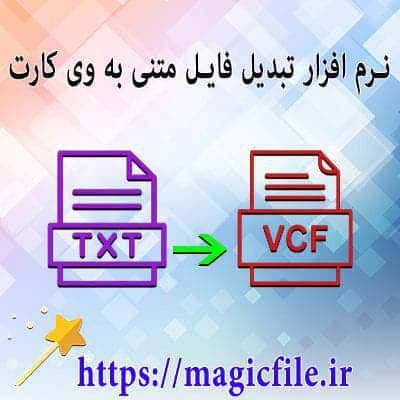تصمیمگیری: فرآیندی پیچیده و حیاتی
تصمیمگیری یکی از مهمترین مهارتها در زندگی فردی و حرفهای است. این فرآیند شامل انتخاب بهترین گزینه از میان چندین گزینه موجود میباشد. برای درک بهتر تصمیمگیری، لازم است چندین جنبه را بررسی کنیم.
FACTOR VARIABLES IN DECISION MAKING
در تصمیمگیری، عوامل زیادی نقش دارند. عواملی مانند اطلاعات، تجربیات گذشته، احساسات و حتی فشارهای اجتماعی میتوانند تأثیرگذار باشند. به عنوان مثال، اگر فردی تصمیم به خرید یک خودرو بگیرد، ممکن است به قیمت، برند، و نظرات دوستانش توجه کند.
STEPS OF THE DECISION-MAKING PROCESS
فرآیند تصمیمگیری معمولاً شامل مراحل زیر است:
- شناسایی مشکل
- جمعآوری اطلاعات
- تحلیل گزینهها
- انتخاب بهترین گزینه
- اجرای تصمیم
- ارزیابی نتایج
EMOTIONAL INFLUENCES ON DECISION MAKING
احساسات نیز نقش مهمی در تصمیمگیری ایفا میکنند. گاهی اوقات، تصمیمگیری تحت تأثیر هیجانات مانند ترس، شادی یا ناامیدی قرار میگیرد. این احساسات میتوانند باعث شوند که فرد بهطور غیرمنطقی عمل کند.
CONCLUSIONS AND STRATEGIES
در نهایت، برای بهبود فرآیند تصمیمگیری، میتوان از روشهایی مانند تفکر انتقادی و مشاوره با دیگران استفاده کرد. این راهکارها میتوانند به کاهش ابهامات و افزایش دقت در انتخابها کمک کنند.
بنابراین، تصمیمگیری یک مهارت پیچیده است که نیاز به فکر و تأمل دارد. با توجه به عوامل مختلف و مراحل موجود، میتوان به بهترین نتیجه ممکن دست یافت.
DECISION MAKING: A COMPLETE AND COMPREHENSIVE EXPLANATION
Decision making, undoubtedly, is a fundamental process that influences every aspect of our lives. It’s the art and science of choosing among alternatives, often under conditions of uncertainty, complexity, or risk. At its core, decision making involves identifying options, evaluating consequences, and selecting the most suitable course of action. But, what makes it so intricate and vital in both personal and professional contexts?
THE IMPORTANCE OF DECISION MAKING
Every day, people and organizations face countless choices, from simple to complex. Whether deciding what to eat, which career path to follow, or how to allocate resources in a company, decision making impacts outcomes profoundly. Effective decisions can lead to success, growth, and stability, while poor choices may cause failure, setbacks, or missed opportunities. Therefore, mastering decision-making skills is essential for leadership, strategic planning, and personal development.
TYPES OF DECISIONS
Decisions vary widely in scope and complexity. They can be classified into several types: programmed and non-programmed, strategic and operational, individual and group. Programmed decisions are routine, repetitive, and often guided by established policies or rules. Conversely, non-programmed decisions are unique, requiring creative thinking and judgment. Strategic decisions shape the long-term direction of an organization, while operational decisions focus on day-to-day activities. Group decisions involve multiple stakeholders, emphasizing consensus, whereas individual decisions depend solely on one person's judgment.
STAGES OF THE DECISION-MAKING PROCESS
The process itself isn’t random but follows specific stages. First, recognizing the problem or opportunity is crucial; without understanding the core issue, solutions may be misguided. Next, gathering relevant information and data helps clarify options and potential outcomes. Then, generating alternatives fosters creative options—sometimes overlooked but vital. Afterward, evaluating these alternatives involves assessing risks, benefits, and feasibility. The subsequent step is making the choice, which might be straightforward or require consensus. Finally, implementing the decision and monitoring its results ensures accountability and adaptability.
TOOLS AND TECHNIQUES IN DECISION MAKING
Various tools facilitate better decisions. SWOT analysis (Strengths, Weaknesses, Opportunities, Threats) helps evaluate internal and external factors. Decision trees visualize options and potential consequences systematically. Cost-benefit analysis compares the expected positives and negatives. Brainstorming encourages free thinking, while the Delphi method gathers expert opinions anonymously. Advanced techniques like multi-criteria decision analysis (MCDA) consider multiple factors, aiding complex choices.
CHALLENGES AND BARRIERS
Despite structured processes, decision making faces hurdles. Cognitive biases, such as overconfidence or anchoring, skew judgment. Emotional influences or peer pressure may cloud objectivity. Time constraints often force rushed decisions, reducing quality. Incomplete or inaccurate information hampers rational choices. Moreover, organizational politics and conflicts can impede consensus. Recognizing these barriers is vital for developing strategies to overcome them.
DECISION MAKING IN THE DIGITAL AGE
In today's fast-paced digital world, decision making has transformed dramatically. Big data analytics, artificial intelligence, and machine learning provide unprecedented insights, enabling data-driven choices. Real-time information allows organizations to adapt swiftly to changing environments. However, reliance on algorithms and automated systems introduces new risks, like lack of transparency or ethical concerns. Therefore, balancing human judgment with technological tools remains key.
CONCLUSION
In essence, decision making is an intricate blend of analysis, intuition, and experience. Whether simple or complex, every choice shapes our destiny. Developing effective decision-making skills involves understanding the process, employing suitable tools, and being aware of pitfalls. As challenges evolve with technology and globalization, so must our approaches to making smarter, more informed decisions. Mastering this art remains an ongoing journey—one that can unlock endless opportunities and growth.
If you need further details or examples, just ask!





